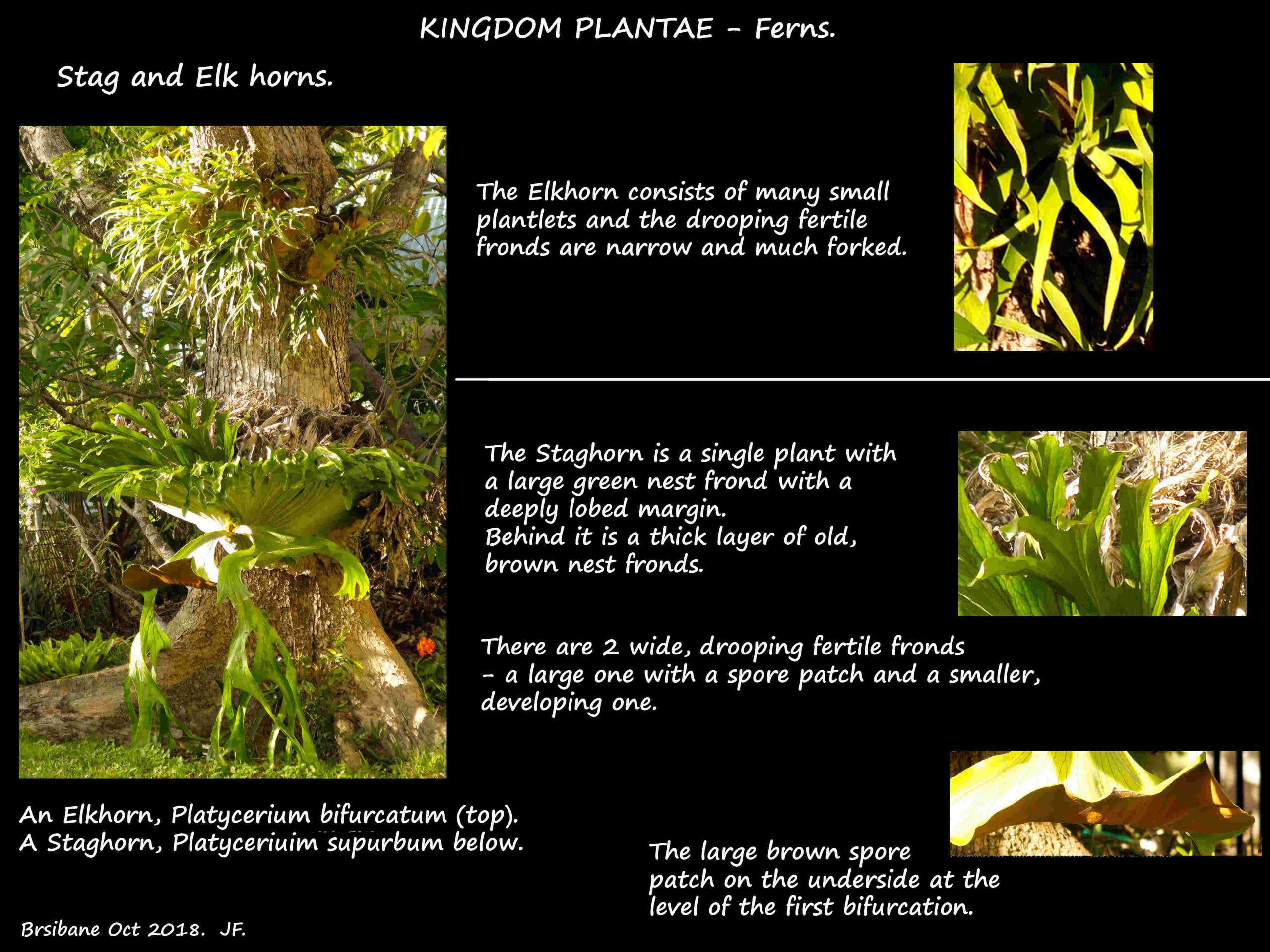Platycerium – Stag and Elk horns.
Division Pteridophyta > Order Polypodiales > Family Polypodiaceae.
The genus Platycerium has about 18 species with 4 found in Australia:
the closely related P. bifurcatum (Elkhorn), P. veitchii and P. hillii which can
all reproduce by forming plantlets or pups; and
P. superbum (Staghorn) which does not produce plantlets.
Platycerium are distinguished from other ferns by having differently shaped nest and fertile fronds
and the fertile fronds repeatedly fork to resemble deer antlers.
Most are epiphytic on trees but some grow on rocks.
Some species have one rhizome and are solitary plants, others have branching rhizomes
and can form large colonies.
The short rhizomes have two types of fronds.
1. Sterile, nest, shield or base fronds are round, kidney or shield-shaped.
These attach the plant to the substrate, protect the roots and collect falling organic
debris and water which nourish the plant.
2. Fertile fronds, sometimes referred to as foliage fronds.
These can jut out or hang down and are forked one or more times.
The sporangia, in one or more patches, can be variously placed on the fertile fronds and this
can help in identification of the species.
J.F.


